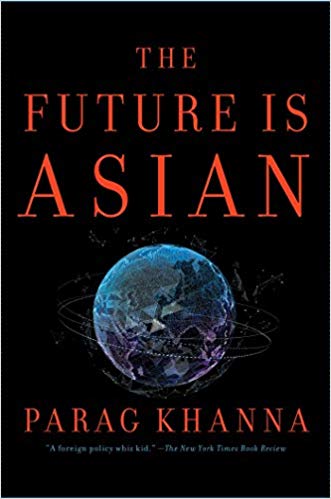You have /5 articles left.
Sign up for a free account or log in.
 The Future Is Asian by Parag Khanna
The Future Is Asian by Parag Khanna
Published in February of 2019.
What is your university’s Asian strategy?
If your school is like most schools, the Asian strategy is likely one of the following:
- Recruit more tuition-paying Asian students.
- Open satellite campuses in Asian cities.
- We have no institutional strategy for Asia.
Having read Khanna’s superb new book, The Future Is Asian, I’m convinced that the three strategies enumerated above are inadequate, unwise, and ultimately self-defeating.
Not that there is anything wrong with recruiting students from Asia or opening up satellite campuses. Those can be good ideas. The problem is that these actions are inadequate to both the opportunity and the threat that Asia’s future demand for postsecondary education represents.
The Future is Asian is not a book about the future of Asian higher education. While the growth of the Asian student and university numbers do get some prominent mentions, Khanna is making a much larger point. Any region that contains sixty percent of the world’s population, half of global GDP and two-thirds global economic growth is bound to have an outsized influence on world affairs. What Khanna is arguing is that those in the West, and in particular the U.S., have failed to grasp the full impact that Asian growth will have on all of our futures.
The Future is Asian provides an excellent synthesis of the historical, political, demographic, and economic trends that are most important in understanding the region. Any single volume that seeks to explain and interpret changes in countries as diverse as China, India, Russia, and Turkey - not to mention smaller Asian countries such as Thailand and Singapore - is bound to miss many nuances. Khanna pulls off this magic trick by emphasizing how Asian countries are becoming more interconnected with one another than most of us outside of the region understand.
The Future Is Asian may be the perfect book to share with your colleagues to stimulate a more robust conversation on developing an Institutional Asian strategy.
In the U.S., the higher ed story can feel mostly depressing. Each day we read about another school that is closing.
We need to balance our U.S. centric higher ed angst with an understanding of how the higher ed story is playing out in Asia. Today, there are about 70 million East Asian and Pacific students enrolled in postsecondary education. By 2040, that number is projected to rise to 257 million.
Where demographic, economic, and political trends are challenging for U.S. higher education, the trends are almost all favorable if you look across Asia. Rising wealth and urbanization will drive demand, while at the same time Asian governments are making investments in higher education not seen in the U.S. since the days of the GI Bill.
The time is now for U.S. colleges and universities to understand how they can play a constructive role in moving higher education forward across Asia. We need to move beyond the idea that the only reason to recruit Asian students is to shore up our bottom lines. Instead, we need to spend the time necessary across a range of Asian countries to truly understand how we can create shared value when it comes to advancing postsecondary education.
How concerned should the U.S. be with the authoritarian and non-democratic policies of many Asian societies? Khanna believes that the West is over-concerned, and that the true measure of a good society is not only democracy by equitable growth. How U.S. universities should approach the question of partnering with Asian governments around issues related to higher education is an interesting question.
Are our colleges and universities doing enough to engage with our Asian future?
Are we prioritizing the teaching of Asian languages, the recruitment of Asian scholars, and the development of Asian facing academic programs to the extent that we should?
What role might online learning have in meeting the Asian demand for high-quality education?
What books on Asia would you recommend?
Do conversations about the future of your school ever get sparked by books?
What are you reading?




